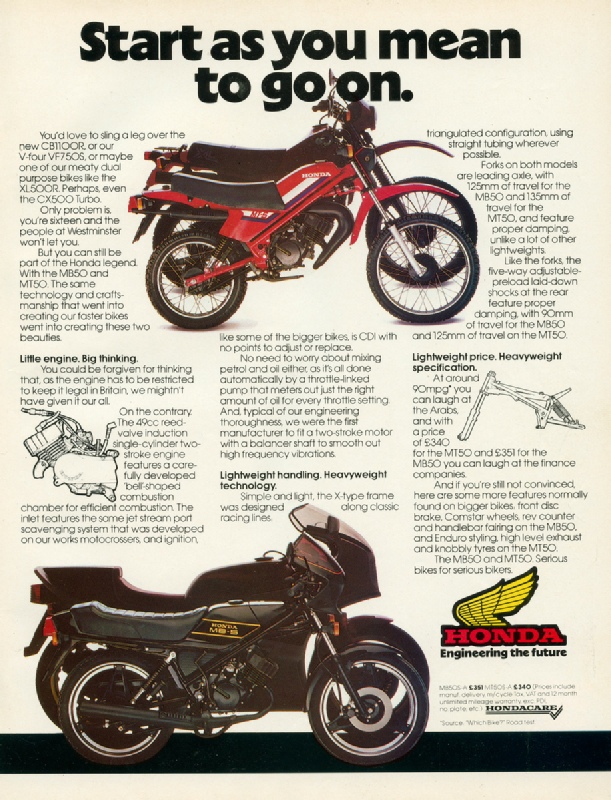Vintage_Mania
1979 Honda CB400T
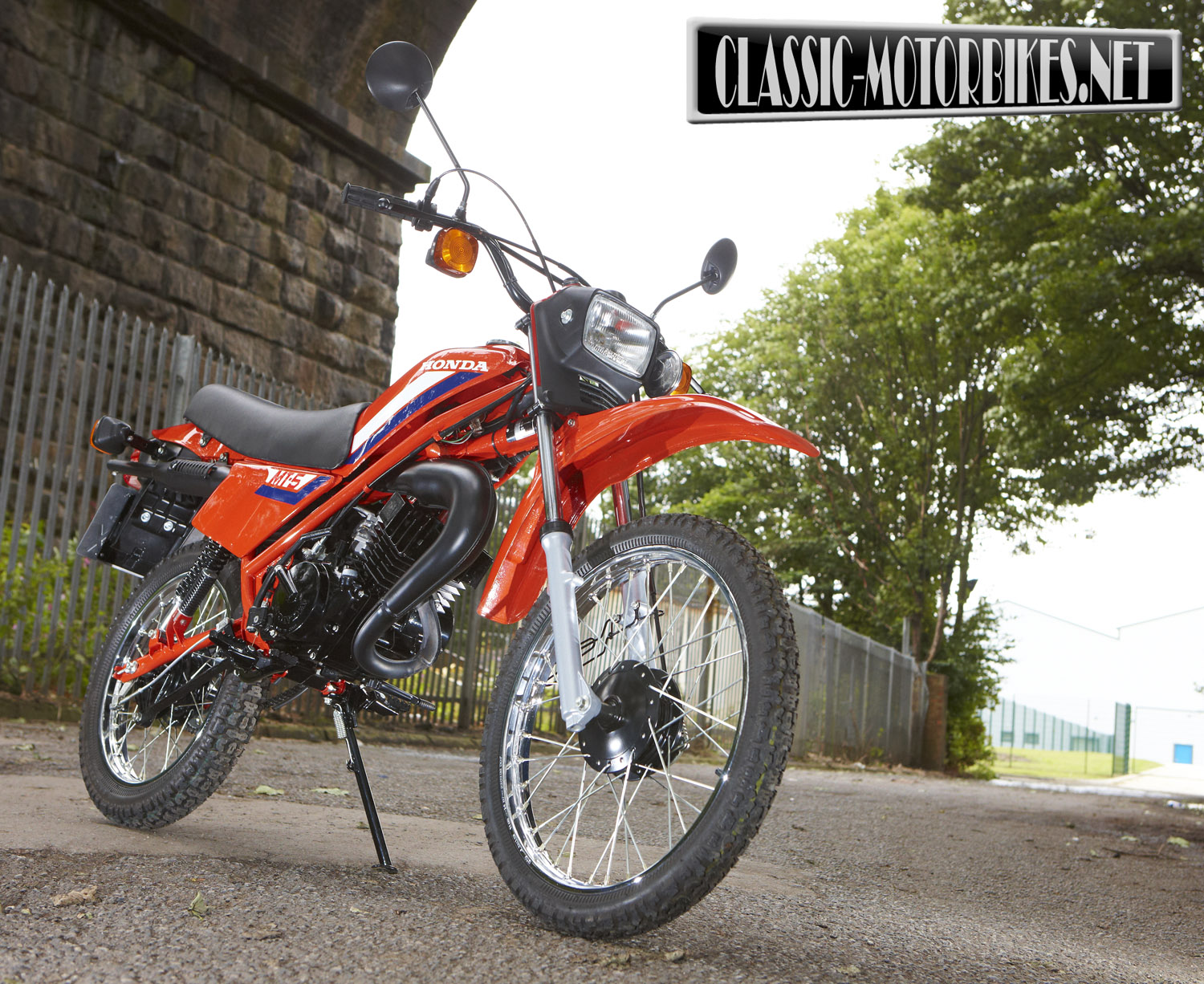
“Look at the pulling power you can have at 16”, the Honda ad of 1980 claimed, suggesting that buying an MT50 would not only move you around but attract the opposite sex too, bold claims indeed. Chris Pearson delves deeper and has trouble pulling the skin off a rice pudding.
Having spent the 70s sat well out of the sports moped scene with the underpowered and heavy SS50, Honda returned to the fray with a brace of new models aimed at getting the best out of the new regulations of 1977. The all new 2-stroke, reed-valve MT and MB series were machines that Honda figured would attract the teenagers. The 2-stroke was a U-Turn for the mighty H, it is well documented that Mr Honda hated the simple stroker design, but had no choice but to begin making them in order to win in the heat of competition, after all the PR men claimed “When Honda race, Honda win” and with it came credibility in the showrooms.
The M series could have been a stroke of genius from a production point of view at least, if only Honda had chosen to use the same chassis and components for both machines, but looking in detail reveals the MT and MB are actually quite different in every respect. A good example of this is the main frame, each model is similar looking from the outside but, once stripped of their bodywork, the two machines are actually completely different. It’s the same story with the fuel capacity, the MB has a larger range, 9litres compared to the MT’s 6.8, with the former machines tank running right under the seat to provide the extra space. This area under the seat on the MT is home to the 1.5 litre two stroke oil tank while strangely the MB, has the smaller oil tank at 1.1ltrs and situated right up front near the head stock.
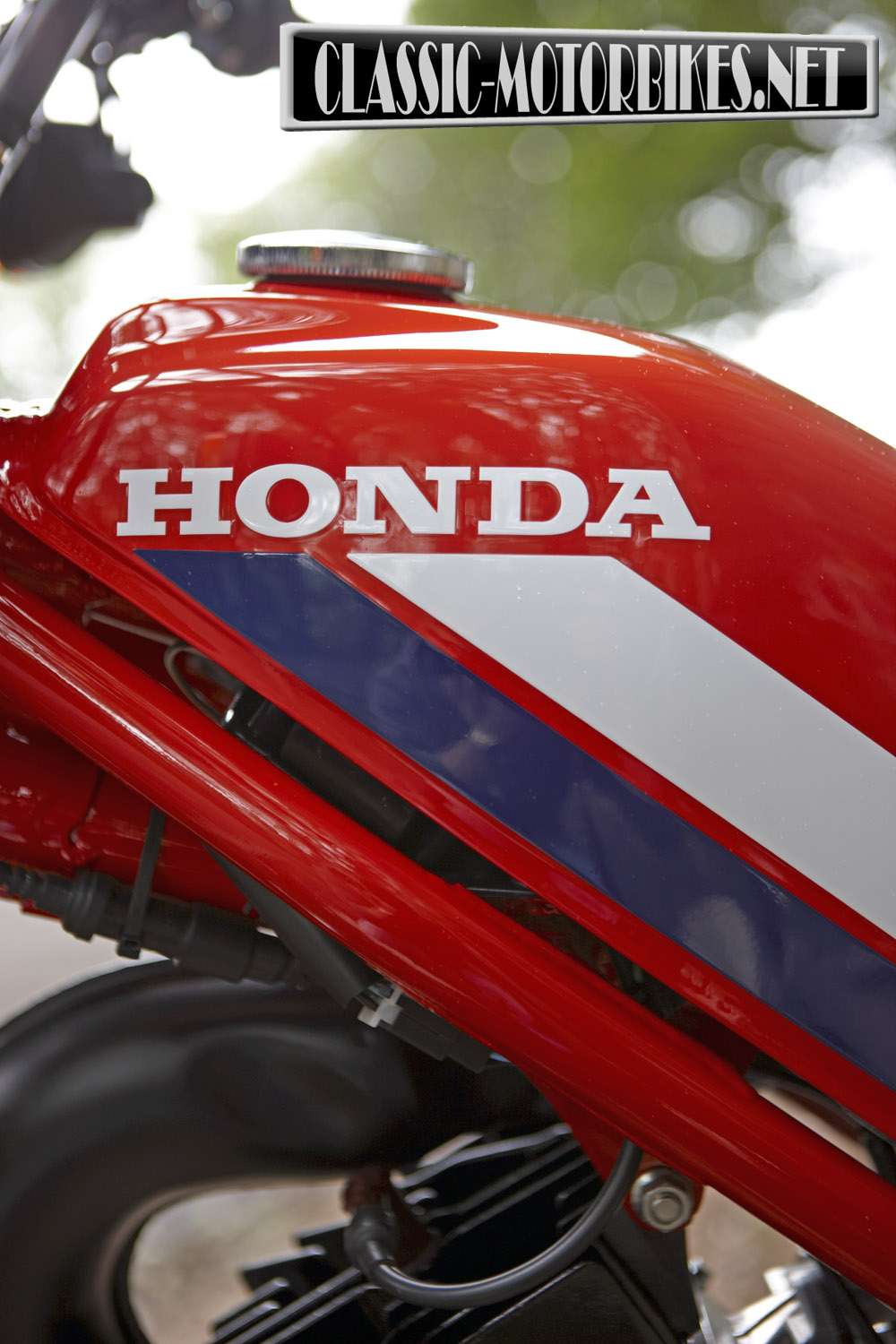
In typical Honda style, the MT and MB engines were complex, overly so in many eyes. The engine features a balance shaft, driven from the large straight cut primary gear on the clutch basket. This wasn’t a direct drive either, but rather via an idler gear mounted on the casing, adding weight and power sapping complexity in the process. The use of potentially noisy, straight cut gears, was a relatively good one, as the usual helical primary gears do eat up even more power and, with a mere 2.55 BHP to play with, all attempts at saving even the smallest part of a horse power were most welcome. The noise issue was addressed with a complex anti backlash arrangement on the idler gears. The balancer shaft also spins above the 5-speed gearbox helping to spray the lubricant over the gear wheels as it dampens out the vibes.
Owners of the Honda MT soon came in for a shock when it came to unrestricting the engine to liberate a bit more power. This practice was commonplace among ‘ped owners and, although dealers may have been reluctant to get involved, the knowledge was freely available, as were a host of go faster parts. Unfortunately the Honda was not a simple machine to do this sort of work to, whereas the majority of 50s are held back by a restriction in the exhaust, the MT suffered a more complete method, with the carburettor, barrel, exhaust and even the CDI ignition all being used to downsize the power output and keep it within the letter or the UK learner law. This meant in effect that there was little that could be done, save for importing parts from countries that didn’t have such restrictive laws, which, being a time well before global trade, the internet etc, was simply not
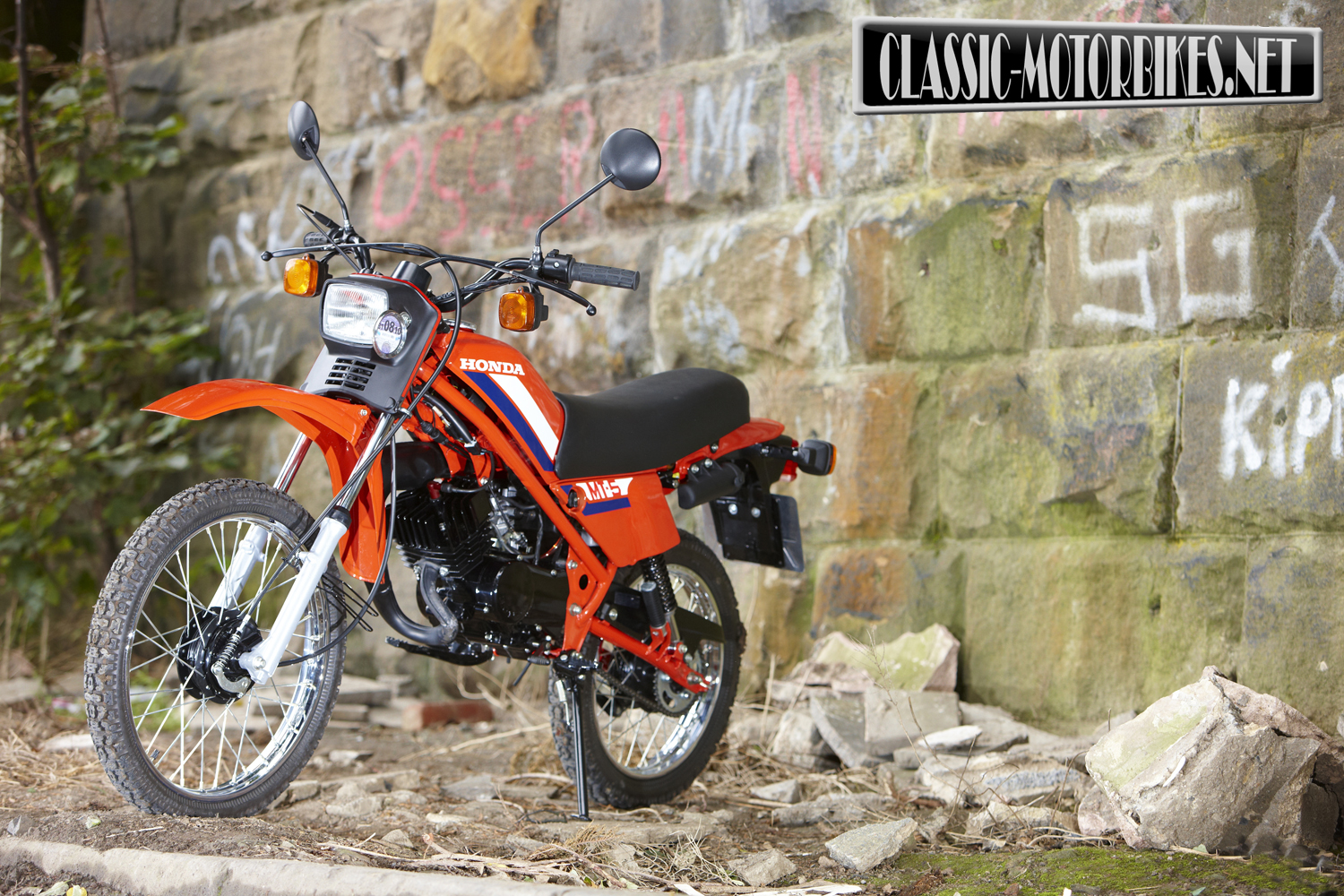
As machines go the MT was, and still is a looker, with a futuristic take on how such a bike should be, but not quite the real deal when it comes to off road machinery. This didn’t really add up to much of a disadvantage as neither were any the traillie 50s of the period, they may have looked the part but the woeful lack of power negated an kind of serious use on the dirty stuff. Instead the Honda was made to look like it could handle the dirt, but still perform well on the road, after all that is where it was going to see most of its use. All three of the leading Japanese manufacturers had viable trail style alternatives, with Kawasaki and Suzuki having the business like AE50 and TS50ER respectively, and Yamaha producing the best selling DT50M. The MT was deliberately priced to make it an attractive proposition, so much so that at £389, it was a good £100 less than most models in the category with only the Yamaha DT50M, at £390 to compete on price.
Despite all being limited to the 30mph top speed, there was still a marked difference between the various models when it came to performance, certainly in acceleration in the case of the Honda. The MT always being the slower of its generation to get a move on from a standing start, losing pace that it never gets the chance to make up. On the flat, and with a lightweight rider on board, the top speed could just nudge over the 30mph mark, however, the slightest incline would see this drop quite dramatically. The need to drop a couple of gears soon arises once the engine has dropped out of its narrow power band and it can be quite difficult keeping the relatively smooth engine spinning up and producing useable power once this process has begun. Thankfully the rest of the bike is well designed, with lots of room on board thanks to the long seat and low footrests that allow the larger rider great comfort, and the brakes work well too. The C90 style stoppers at each end give tons of feel and braking power, almost on a par with the MB’s hydraulic single disc.
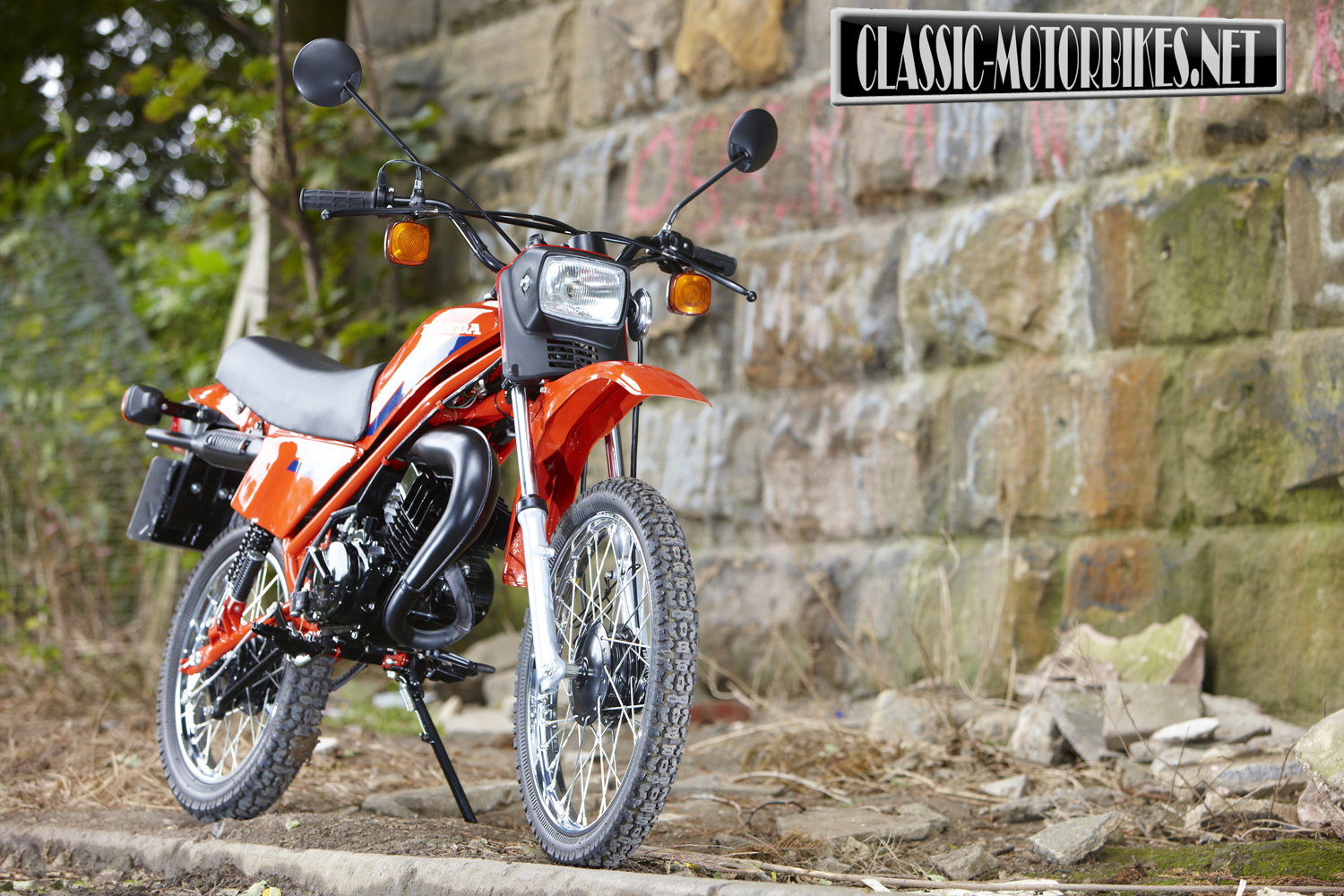
The MT50 didn’t hang around long as in 1982 Honda introduced a greatly revised version the MTX50, a machine featuring a more conventional steel cradle frame and Pro Ink suspension, with beefier 31mm forks doing the work at the sharp end. A tachometer was also added to the spec sheet of the MTX, but the machine, still powered by the same engine, was also 10kgs heavier come the weigh in. In 1985 the original MT, now called the MT50S-F, returned to the line up, albeit with a list of small modifications that can make ordering parts a nightmare for the unwary or eBay buyer. For example, the engine casings and many engine parts of the G model are not compatible between the earlier and later versions due to a revised kick start mechanism making engine and chassis numbers essential when ordering any part for the MT series. This was the story almost every year until 1990 when the changes to the MT abated, however, it remained in production until well into the next decade making it the last survivor of the 80s sports moped scene by a good margin.
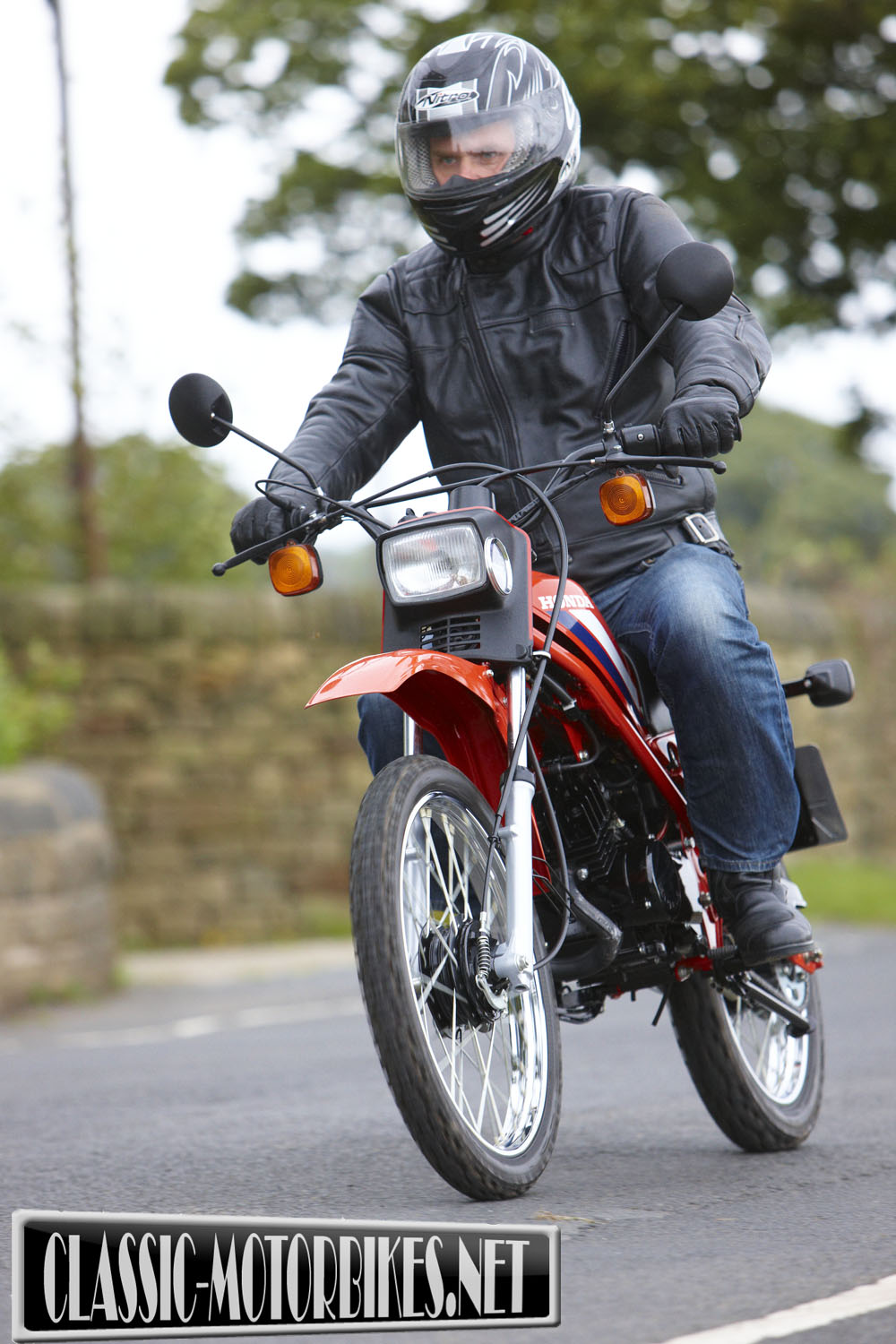
50s in the 80s
The period between being 16 and 17 years of age may only be one year in a life, but for most bikers it’s the formative one. Like a first kiss, or similar encounter with another human being, a first bike sticks in the memory forever, spurring rose tinted thoughts of days gone buy and is the reason behind the resurgence of interest in the sports moped scene.
All will recall the battles with parents, as they wanted you to have a “nice cheap little” bike to get to work on and you really wanted the latest, and most expensive, sports tackle to impress that other new thing in your life, the girlfriend. On top of that the government where constantly sticking their nose in, first of all in 1971, by classing 50cc machinery as powered cycles complete with pedals and then again in 1977 when a new legal definition for such vehicles came into force.
From the 1st of August that year, all new 50cc machines aimed at 16year olds must not be capable of exceeding 30mph by more than 5mph when carrying a 75kgs rider in still air. The answer was a simple one, if performance was no longer a selling point, as it had been previously, then machinery had to be cosmetically pleasing, and the war then became one of clever marketing, pricing, and styling. The machinery that this new era brought was diverse style wise, if a little blasé technically, there being little point in developing new engines if the end power was to be capped and the emphasis on moving forward switched to the larger capacity machinery.
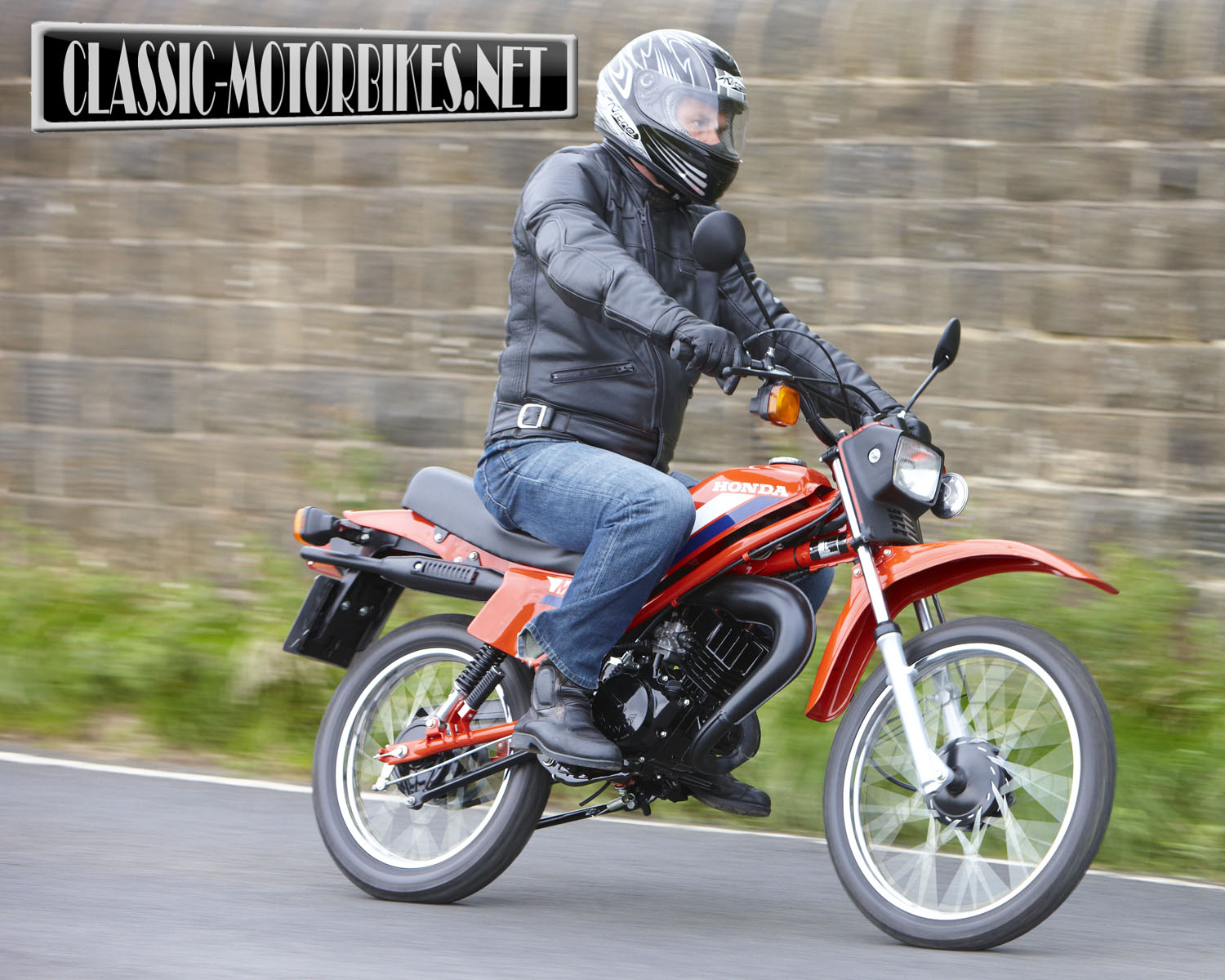
The mid 80s was effectively the end of the sports moped ethos. Despite the best efforts of the Japanese manufacturers, and some superb machines like the Kawasaki AR50 and Honda MBX50, the 50s of the 80s never would recreate the heady days of the 70s. The problems facing the breed were many, youngsters, particularly in more modern times, increasingly having more distractions vying for their attention, with many opting to miss the chance to get on the road at 16 and wait for a car, the parents favoured option, at year later. Other factors didn’t help, the expense of CBT tests, riding equipment and insurance, increasing legislation, lack of work for school leavers and the complexity of geared machines when compared to the rapidly emerging auto scooter, not to mention the UK weather, all added to the demise of this cult. In more recent times there has been a renewed interest in getting 16 year olds back onto motorcycles, albeit on a much smaller scale to that of the 70s and early 80s, with the race rep Yamaha TZR50 and a variety of Europeans offerings from the likes of Derbi and Rieju.
Honda MT5 S-A Specifications
Engine – Air cooled, single cylinder, 2-stroke, reed valve induction
Capacity – 49cc
Bore & stroke – 39 x 41.4mm
Compression Ratio – 6.4:1
Carburetion – 13mm Keihin PF05B
Max Power – 2.55bhp @ 6500rpm
Torque – 2ft-lbs @ 6000rpm
Ignition – CDI
Transmission – 5-Speed, wet clutch, chain final drive
Frame – steel spine
Suspension – 27mm forks, twin dampers adjustable for preload
Wheels – 2.50 x 19, 3.00 x 16
Brakes – 110mm single leading shoe front and rear
Wheelbase – 1225mm
Weight – 78kgs
Fuel capacity – 6.8ltrs inc 1ltr reserve
Top speed – 30mph
Honda MT50 Timeline
1980 MT50 S-A – Chassis number starting AD01-5000882
The first of the MT models arrived in January of this year and was phased out in September 1982 as the MTX replaced it. Towards the end of its career the price was dropped considerably to clear stocks.
1985 MT50 S-F chassis number starting AD01-5109771
This model is often referred to as the S-E but in effect they are one and the same, even so small differences mean care should be taken when ordering parts
1986 MT50 S-G chassis number starting AD01-5200034
The G saw major changes to the kick start mechanism and many small components like different indicator assemblies were introduced for this version. A fuel tank breather was also introduced and a revised side stand was also fitted, the ordinal suffering cracks around the mounting bolt hole.
1988 MT50 S-J chassis number starting AD01-5400001
a modification was implemented to the brake wear indicators and rear sprocket mount. The revised side stand was also fitted to this model
1990 MT50 S-L chassis number starting AD01-5500002
The separate rectifier and regulator units of the earlier models are combined into one single component on this model, a modification requiring a new design of wiring loom too.
